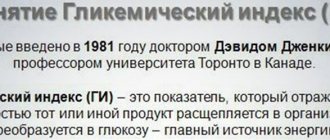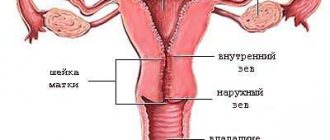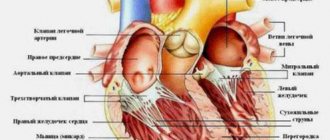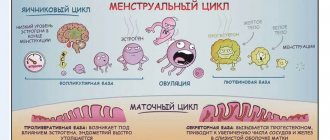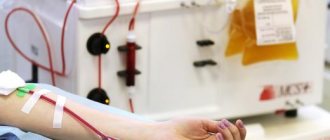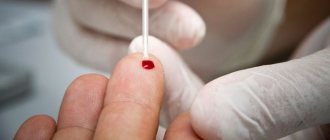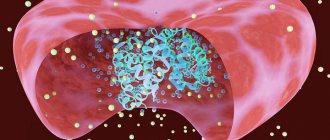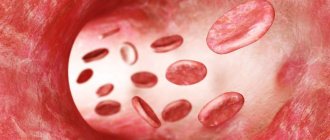Top foods containing iron
Women should consume at least 18 mg of iron per day, men - 10 mg. The list of products that naturally increase the concentration of hemoglobin in the blood has long been compiled.
The leaders in iron content are the following products (per 100 g):
- Pork liver 20.2 mg;
- Chicken liver 17 mg;
- Dark chocolate 12 mg;
- Oysters 9.2 mg;
- Pumpkin seeds 9 mg;
- Beef liver 7 mg;
- Beef heart 4.8 mg;
- Pork heart 4.1 mg;
- Beef meat 3.6 mg;
- Lamb meat 3.1 mg;
- Pork meat 1.8 mg;
- Chicken meat 1.6 mg;
- Turkey meat 1.4 mg;
- Mussels 6.7 mg;
- Sardines 2.9 mg;
- Chicken yolk 6.7 mg;
- Quail yolk 3.2 mg;
- Beef tongue 4.1 mg;
- Pork tongue 3.2 mg;
You should also include in your diet:
- Pistachios 60 mg;
- Spinach 13.51 mg;
- Lentils 11.8 mg;
- Peas 6.8-9.4 mg;
- Buckwheat 8.3 mg;
- Barley 7.4 mg;
- Oatmeal 5.5 mg;
- Wheat 5.4 mg;
- Peanut 5 mg;
- Dogwood 4.1 mg;
- Cashew 3.8 mg;
- Corn 3.7 mg;
- Pine nuts 3 mg.
The list indicates the amount of iron that is present in 100 grams of the product.
How to increase hemoglobin?
This question is often asked by patients, but it is not possible to answer it unequivocally. You need to know the reason why there is a decrease in hemoglobin. When the total amount of hemoglobin decreases, most often manifested by a decrease in its concentration per unit volume of blood, we talk about the presence of anemia, or rather anemia, in a person.
The main reason for a decrease in hemoglobin levels is iron deficiency, which can occur when its total content in the body decreases. The causes of iron deficiency, in turn, can be:
- insufficient intake of it from food;
- iron absorption disorder;
- blood loss.
Insufficient iron content in the diet is usually associated with a predominance of plant foods. Thus, nutritional iron deficiency is often observed among vegetarians. This circumstance is further aggravated by the deficiency of vitamin B12 contained in animal products.
Iron deficiency anemia develops when iron absorption in the intestines is impaired. This condition can be caused by various pathological changes in the duodenum and upper parts of the small intestine. Impaired absorption of iron can occur after operations on the stomach and duodenum, or removal of part of the small intestine. At the same time, if the stomach and upper small intestine are not affected by lesions of the gastrointestinal tract, iron absorption is usually not impaired. Indirect causes of impaired iron absorption can be chronic pancreatitis and atrophic gastritis. Iron absorption may be reduced due to excess content of iron absorption inhibitors in food - calcium, phosphates, oxalates, etc.
The most common cause of iron deficiency anemia is blood loss, especially long-term, constant, although minor. The body loses more iron than it receives from food. If, in case of nosebleeds or uterine bleeding, a doctor is consulted before severe anemia develops, then gastrointestinal bleeding can remain unnoticed for a long time and the anemia is more severe. The causes of such blood loss can be erosions and ulcers of the stomach, erosions of the esophagus, varicose veins of the esophagus and cardia of the stomach, tumors of the stomach and intestines, as well as tumors of other localizations.
There are anemias associated with a deficiency of vitamin B12 and/or folic acid in the body. Vitamin B12 deficiency in the body can occur as a result of impaired absorption:
- insufficient secretion of hydrochloric acid, pepsin and intrinsic factor: due to atrophy of the gastric mucosa, surgical removal of part of the stomach, toxic effects on the gastric mucosa, such as alcohol;
- damage to the small intestine in the following diseases: severe chronic enteritis, diverticulosis, tumors, sprue, celiac disease, removal of part of the jejunum;
- competitive absorption of large amounts of vitamin B12: with tapeworm infestation, intestinal dysbiosis, cecal syndrome (after intestinal surgery and errors in anastomosis).
A decrease in hemoglobin concentration can be caused by premature death of red blood cells, an increase in the rate of destruction of red blood cells. This condition is observed in some immune disorders (rheumatoid arthritis, lupus erythematosus, etc.), long-term infectious diseases (hepatitis, pneumonia, tuberculosis, chronic pyelonephritis and others), as a result of exposure to drugs and chemicals of oxidative action, poisons (snake bites, spider bites , bees), thermal injuries, infectious factors, etc.
Correction of hemoglobin levels is carried out taking into account the cause of anemia. An important goal of treatment is to eliminate the underlying disease. Therefore, when determining low hemoglobin in the blood, it is necessary to undergo a number of examinations to find out what kind of anemia it is (iron deficiency, B12 deficiency, associated with folic acid deficiency, hemolytic, etc.). Next, a thorough diagnostic search for the causes of anemia is necessary: fibrogastroduodenoscopy, x-ray examination of the gastrointestinal tract, ultrasound, examination of the intestines, stool analysis for blood and helminth eggs.
Treatment of chronic iron deficiency anemia in people should be a consultation. By this we mean participation in the diagnosis and treatment of various specialists, depending on the causes of iron deficiency anemia (surgeon, therapist, proctologist, endoscopist, nutritionist, urologist and others). Only this approach involves finding and eliminating the cause of the disease. First of all, this concerns blood loss. Antianemic therapy for unresolved, even minor blood loss does not provide a lasting effect.
Nutrition plays an important role in the treatment of anemia. To increase hemoglobin levels, it is recommended to eat chicken liver, kidneys, heart, and white meat. For cereals, give preference to buckwheat, beans, lentils, peas and other legumes. The best vegetables to eat are tomatoes, new potatoes, onions, pumpkin, and lettuce. Any greens are useful (parsley, dandelion, spinach, dill). Iron-rich fruits: better green varieties of apples, bananas, pomegranates, apricots, peaches, plums, persimmons and quinces. You definitely need to drink juices: pomegranate, beetroot, carrot. It is also useful to eat seafood, nuts (especially walnuts), dried fruits, and chocolate (black).
Of course, treatment of anemia always includes the prescription of medications. It is impossible to eliminate iron deficiency anemia without iron supplements, only with a diet that includes a lot of iron. The absorption of iron from food is limited, its maximum is 2.5 mg/day. From medicinal preparations, iron is absorbed 15-20 times more. However, the food must be complete and contain a sufficient amount of well-absorbed iron and protein. It is better to take iron supplements together with ascorbic acid. The latter improves the absorption of iron in the intestines. Since food significantly reduces the absorption of inorganic iron, taking the tablets before meals is more effective. In the form of injections, iron preparations are administered only if there are special indications. It must be remembered that unreasonable use of iron supplements can cause severe side effects. Even a relatively small overdose can be manifested by nausea, vomiting, diarrhea, abdominal pain, low blood pressure, general weakness and other unpleasant symptoms.
To prevent anemia associated with vitamin B12 or folic acid deficiency, it is important to promptly identify and treat chronic diseases of the gastrointestinal tract. Treatment of B12-deficiency anemia involves eliminating the causes that caused it: in case of helminthic infestation, deworming is a necessary condition for cure; in cases of changes in intestinal flora and diarrhea, enzyme and fixative agents and dietary nutrition are used. Well, the main treatment is vitamin B12 injections. As a rule, a few days after the start of the course of injections, it is possible to significantly increase the level of hemoglobin in the blood.
And so, in this article only some anemias are discussed; in fact, there are much more of them. Each case of low hemoglobin in the blood requires a thorough examination. Problems with increasing hemoglobin do not arise if the cause of anemia is accurately established. True, some anemia requires a rather long course of treatment, and sometimes courses of preventive treatment. So, if you have low hemoglobin, pay attention to your diet and quickly see a doctor for a full examination.
Tokareva Irina Viktorovna Head of the City Geriatric Center
Subtleties of increasing hemoglobin
Iron-rich foods are the best way to combat low hemoglobin.
Pomegranate fruits, which have “deposits” of iron, effectively help increase the level of this iron-containing complex protein. The juice made from them is also useful.
Red grape wine is an effective assistant in increasing hemoglobin. However, this drink is prohibited for expectant mothers.
Even a diet menu based on the use of iron-containing dishes does not guarantee success. The production of hemoglobin that occurs in the body depends not only on this substance. You also need to take care of your copper intake.
Pear is a fruit that speeds up the process of restoring healthy levels of iron-containing protein. It is often recommended by doctors for patients suffering from anemia, especially if iron supplements do not produce results.
Honey not only improves the situation with hemoglobin, but also has a restorative effect on the body. It is recommended to eat about 50-70 g of healthy sweets every day.
The absorption of iron will become better if you include foods rich in vitamin C. The best effect is provided by freshly squeezed fruit drinks and citrus fruits. Buckwheat contains folic acid, which activates the process of hematopoiesis. Bananas are recognized as a supplier of vitamin B6, without which hemoglobin cannot be normalized.
There are also a number of long-acting drugs:
- heferol;
- ferrogrademet;
- ferrograd;
- irovit;
- sorbifer durules;
- fefol;
- Tardiferon-retard.
Drugs that are effective for a short period of time are ferrous gluconate, ferrous fumarate, ferrous sulfate.
Traditional medicine offers its own methods of combating low hemoglobin.
The following recipes will be useful:
- Raisins, prunes, dried apricots and walnuts are taken in equal quantities and mixed thoroughly. The resulting mixture is processed using a meat grinder and supplemented with a small amount of honey. Every day you need to consume this sweet dish in the amount of 6 tablespoons.
- Freshly squeezed carrot juice is effective in increasing hemoglobin; 300-400 ml per day will benefit the body. Beetroot juice is mixed with honey in equal proportions, the mixture is consumed in the amount of 2 tablespoons three times a day.
- Red clover helps normalize the substance. 4 heads of the plant are dissolved in boiling water and infused for half an hour. Treatment lasts for a month, the mixture is consumed half a glass three times a day, preferably taken before meals.
- “Compote” made from fresh juices mixed in equal (100 g) parts effectively helps increase hemoglobin. Necessary juices: apple, carrot, beetroot, pomegranate. You should add 50 g of honey, consume 2 spoons three times a day.
- Blue blackberry (2 parts leaves), mixed with white clasp grass (2 parts), St. John's wort grass (3 parts). Take a tablespoon of the resulting composition and pour it with a glass of boiled water. Infuse the mixture for three hours, take a spoon three times a day for 30 days.
What vegetables increase hemoglobin?
Beetroot helps to cope most effectively with iron deficiency; it is useful in raw or boiled form. This product ensures the regeneration of iron content, “starts up” red blood cells, and enriches the blood with oxygen. Other vegetables will help increase hemoglobin.
- Carrot. The product is consumed fresh, can be added to salads, and can be boiled.
- Tomato. The vegetable improves blood composition, saturates it with essential elements, and prevents the formation of blood clots. Tomatoes do not lose valuable qualities after heat treatment.
- Potato. The vegetable is saturated not only with iron, but also with other useful elements - calcium, phosphorus, potassium, magnesium, vitamins and organic acids. It is included in the menu boiled.
- Zucchini. The product is rich in iron, potassium and magnesium. The vitamin C content helps in the absorption of iron.
All of these vegetables strengthen the body, restore the functioning of the intestines, which makes the fight against low hemoglobin more effective.
What fruits increase hemoglobin?
Modern research has found that the first fruit in the fight against iron deficiency is the fresh peach. 4 mg are present in 100 g of fresh product, in dried - about 3 mg. The following fruits are also relevant.
- Quince. Adding 100 g to the menu provides 3 mg of iron.
- Persimmon. Eating 100 g of fruit “gives” the body 2.5 mg of iron.
- Pear. In addition to iron (2.3 mg), the fruit is rich in zinc, manganese, cobalt, copper, and is effective in treating anemia.
- Apple. For a long time it was considered the number one fruit in the list of fruits that increase the concentration of hemoglobin in the body. When fresh, 100 g of apples contain 2.2 mg. The indicators of dried fruits look better - approximately 2.7 times more.
- Pomegranate. By eating 100 g of the product, you can replenish iron reserves by 1 mg. It is also good for its abundance of valuable vitamins.
- Apricot. It is best consumed in dried form, the concentration of essential elements increases. The fresh product is also useful - 0.7 mg. In addition to iron, apricots contain cobalt, manganese, and copper. All these elements together are useful for anemia and activate hemoglobin biosynthesis.
- Kiwi (0.8 mg) and fresh plums (0.5 mg) will be beneficial for the body.
- Watermelon is famous for its high concentration of iron; its consumption can enrich the body with other valuable substances - potassium, vitamins. Not only is the hemoglobin level restored, but also energy increases, and the person gets rid of chronic weakness.
Iron absorption is a process that occurs in the proximal intestine. There are certain foods that contain phytates and phosphates that inhibit it. The solution to the problem will be to include in the menu fruits that activate the absorption of iron and are endowed with vitamin C. The most beneficial will be all citrus fruits, melon, pineapple, and sour apples.
Top 10 healthy vegetables and fruits
It is best to include in your diet those vegetables and fruits that contain iron and other metals as trace elements. The same zinc and magnesium regulate hematopoietic function, and iron is used to produce hemoglobin. Also, those vegetables and fruits that contain a sufficiently high content of vitamins PP, K, C, and E help increase its concentration.
Beet
Beetroot juice increases hemoglobin very well. It is enough to consume it at least 20 - 30 milliliters per day in order to increase hemoglobin by 10 g/l within a week.
Another feature of beets is that they retain their beneficial properties even when cooked, and they also provide the body with the lion’s share of indigestible fiber (which helps normalize intestinal function, thereby receiving more micronutrients from food).
Pomegranate
Including pomegranate fruits in the diet helps normalize hematopoietic function and raise blood pressure. Pomegranate also perfectly raises hemoglobin.
Doctors also say that pomegranate helps prevent headaches. But it is grains that should be consumed, but it is better to avoid concentrated pomegranate juice - its use leads to a sharp increase in hemoglobin levels in a short period of time, which can cause angina pectoris. If you do drink juice, then dilute it with water in a ratio of 1 to 3.
Apples
Of the common fruits, apples have the highest concentration of iron . It is because of this that a cut apple quickly becomes covered with a brown film (or rather, its pulp). This occurs due to the oxidation of iron molecules.
How many apples should you eat daily to increase hemoglobin? About 3 – 4 medium-sized fruits will be more than enough. If you give preference to concentrated juice, then you should drink it in small portions - only 20 - 30 milliliters. Apples are also an excellent source of vitamins A, C, E and PP.
Bananas
Bananas are also good for hemoglobin, since they contain a large amount of folic acid (vitamin B6), and it stimulates the absorption of iron . Without this vitamin, ferum is simply not synthesized into hemoglobin and literally immediately after consumption it is excreted along with feces.
For those who do not like bananas or who are not recommended to eat them (for example, with diabetes, obesity, chronic diseases of the gastrointestinal tract), you can prepare jelly from dried bananas. The only caveat is that this jelly is first washed 2 or 3 times with water (standing for at least 20 - 30 minutes). This will help retain all the fiber but reduce the concentration of carbohydrates.
Grapefruit
Grapefruit is a source of vitamins C and PP (contained in the zest and just gives it a bitter taste).
Also, eating citrus fruits (oranges, lemon and others) speeds up metabolism and helps absorb iron faster.
Just don’t overuse grapefruit - excess ascorbic acid also harms the body (increases blood viscosity, provokes red blood cell adhesions).
Ginger
Ginger root also has a positive effect on the blood. Moreover, you need to consume only 5–10 grams of this product per day to improve the functioning of the cardiovascular system and prevent oxygen starvation. Ginger also cleans blood vessels.
It is recommended to consume ginger fresh or dried, but not canned (upon contact with acetic acid, the essential oils included in the composition break down into their simplest elements).
Garlic
It is a good source of vitamin C and also contains a wide range of essential oils and resins that help the body absorb iron faster .
Another feature of garlic is that it accelerates the process of removing toxins (including inorganic types), which can provoke a sharp decrease in the level of hemoglobin in the blood to a critical level.
Sauerkraut
It contains ascorbic acid, and in almost the same concentration as in lemon (per kilogram - about 350 milligrams of vitamin C).
And red sauerkraut also contains a small amount of iron - it is more preferable for increasing hemoglobin.
Sea kale
Rich in iron, zinc, magnesium, vitamin PP and folic acid. Many doctors consider this product to be the most beneficial for the cardiovascular system.
Every day it is recommended to eat at least 30 grams of seaweed in any form (pickled and pickled are the most common options).
Spinach
Among greens, it is the richest in iron (almost 12 mg per 100 grams of fresh product).
It is recommended to consume it fresh, adding it to various types of salads. Goes well with olive oil and garlic.
Which berries increase hemoglobin?
Berries will also help improve hemoglobin levels when levels are low. You should definitely eat cranberries and black currants; the products are healthy not only fresh, but also frozen. Cranberries can be mixed with sugar. Strawberries, strawberries and blueberries are also recommended for iron deficiency.
A berry that is useful for anemia and anemia is rowan. To achieve the effect, you must eat at least a tablespoon daily.
What should be excluded from the diet?
A decrease in hemoglobin levels is facilitated by:
- Almost all dairy products. They contain protein and complex carbohydrates, which slow down the process of hemoglobin synthesis. Milk also thickens the blood.
- Pasta. This also includes all cereals. They interfere with the absorption of iron, oxidizing it while still in the gastrointestinal tract. Such a micronutrient is no longer suitable for the formation of hemoglobin cells.
- Chicken eggs. It is the protein they contain that lowers hemoglobin. In principle, any food based on protein slows down the absorption of iron.
- Wheat flour and all products derived from it. Regular consumption of wheat bread leads to a decrease in hemoglobin by an average of 15 g/l. Therefore, it is better to give preference to black or coarsely ground bread (bran).
Which nuts increase hemoglobin?
Of the nuts that are used in the fight against low hemoglobin, walnuts are the most useful. The product contains iron, potassium, magnesium, cobalt, and a large number of vitamins. This composition allows it to stimulate the process of synthesis of the necessary substance and have a strengthening effect on a weakened body.
Eating nuts in combination with raisins is beneficial for hemoglobin. Half a glass of raisins is soaked in water for 2 hours. Then the water is drained, the raisins are mixed with walnuts (20 g is enough). The dish is divided into three servings, the approximate volume of each serving is a couple of tablespoons.
You can also try a combination of nuts with cranberries and honey. All these elements are mixed using a blender.
Fresh juices
Store-bought juices will not be useful in the battle with low hemoglobin; only natural products will be useful. Freshly squeezed drinks are perfectly absorbed and are rich in a huge number of vitamins. During the treatment process, it is worth preparing them two to three times a day and using them immediately after preparation.
Champions for eliminating iron deficiency in the body: carrot, apple, beet juice. Other freshly squeezed foods will also benefit.
- Fresh zucchini juice mixed with carrot or potato juice is extremely beneficial. It activates intestinal peristalsis, has a calming effect, and promotes the absorption of iron thanks to potassium, magnesium and vitamin C.
- Potato (freshly squeezed) juice helps solve the problem of low hemoglobin. The drink is drunk 30 minutes before a meal; it is enough to take about half a glass 2-3 times a day. Red potatoes are optimal for making juice.
- The benefits of pomegranate juice, once popular as a drink that restores iron levels in the body, are disputed by modern medicine. It is believed to cause constipation and a number of other side effects.
Carrot
Carrot juice has long been used to improve hemoglobin synthesis in the body. To restore the process, you need to drink about 2-3 glasses a day, about half an hour before meals (or an hour after meals).
Excellent results will be provided by a drink prepared from freshly squeezed juices of beets, carrots and radishes. To improve the situation with hemoglobin and increase the concentration of iron in the blood, the composition is taken in the amount of 2 tablespoons per day, treatment lasts a month.
In order for carrot juice to be better “perceived” by the body, you should eat sour cream (in a small amount) before drinking it, so the valuable components will be better absorbed.
Beetroot
Beets are a useful product for low hemoglobin, especially effective in the form of freshly squeezed juice. Good results are ensured by consuming a mixture of carrot and beetroot drinks, the recommended proportion is 2:1.
Beetroot juice should not be taken in large quantities due to its increased biological activity. The drink may have an irritating effect on the mucous membranes. Therefore, you should drink it exclusively in combination with soft formulations, not exceeding a dose of half a glass per day (divided into several doses). You should definitely keep the freshly prepared mixture in the refrigerator for 3 hours in an open container.
Apple
Unlike beet and carrot juice, which do not have an attractive taste in their pure form, apple juice is a tasty medicine. To enrich the body with iron, you can use it either alone or in combination with the juice of other vegetables (carrots, beets).
For example, you can prepare a drink by taking a quarter glass of carrot juice, a quarter of beet juice, and half of apple juice. The thoroughly mixed mixture is consumed twice a day.
All of the above products are not only effective tools for increasing hemoglobin, but also preventing problems associated with it. They should be included in the menu of pregnant women and children, if there are no contraindications.
Symptoms of low hemoglobin and consequences
For an adult, the normal hemoglobin level is as follows:
- for women – from 120 to 150 g/l;
- for men – from 130 to 160 g/l.
In old age, the hemoglobin level in most cases increases up to 180 g/l - this is not considered a dangerous deviation and, as a rule, is assessed as a “stable norm”. In pregnant women, the range of normal levels also expands slightly and can range from 110 to 155 g/l - this is due to temporary changes in blood flow.
Doctors identify the following symptoms of low hemoglobin:
- a feeling of constant fatigue (even if a person sleeps a fairly large amount of time and follows a day and night routine);
- regular headache without changes in blood pressure;
- manifestation of yellowness of the skin;
- deterioration of skin and nails;
- muscle weakness;
- dyspnea;
- slight decrease in blood pressure.
- In critical cases, a person may lose consciousness.
Why is low hemoglobin so dangerous? Oxygen starvation of all organs, the brain, which accelerates the process of deactivation of nerve cells. Along with this, muscle atrophy develops, the walls of blood vessels become thinner and less resistant to rupture (with low hemoglobin, subcutaneous bleeding in the form of capillary networks often occurs).
Also, low hemoglobin may be accompanied by persistent angina and the development of other chronic diseases of the cardiovascular system.
Low hemoglobin is especially dangerous for newborns. In the first few months, the norm for them is from 180 to 240 g/l. This is due to the fact that at this time their nervous system is still actively developing and this is what oxygen is used for. A drop in hemoglobin to 130 g/l can trigger the development of brain pathologies.
It is worth considering that an increased level of hemoglobin also harms the body. In this case, blood viscosity increases, increasing the risk of thrombosis. Also, increased hemoglobin is accompanied by nervousness and decreased resistance to stress.
Products for better absorption of iron
Iron is one of the most important elements necessary for normal hematopoiesis and human life. The body receives it along with everyday meals. Complete absorption of dietary iron depends on the presence of certain foods.
Products with vitamin C
An increase in foods rich in vitamin C in the diet allows you to fully absorb non-heme iron contained in legumes, nuts, dried fruits, and seeds.
Thanks to chemical reactions, the microelement is preserved in the form most suitable for absorption.
High concentrations of vitamin C are found in citrus fruits, sweet peppers, melon, strawberries, black currants, and dark green leafy vegetables.
According to one study, taking 100 mg of vitamin C with meals stimulates iron absorption by 67%! [1]
Based on these results, we can recommend drinking orange juice or other foods rich in vitamin C for better absorption of dietary iron.
Vegetables rich in vitamin C are a must for vegetarian or vegan dieters. They are essential for optimal absorption of iron found in various plant foods.
Foods rich in beta-carotene and vitamin A
The introduction of foods containing vitamin A into the diet is necessary to maintain visual acuity, maintain bone density, growth in children, and ensure full immunity. Vitamin A is converted in the human body from beta-carotene, which comes with foods.
Unsaturated hydrocarbon carotene is characterized as a powerful natural antioxidant. Oranges, peaches, red peppers, apricots, melon, pumpkin, cabbage, carrots, spinach and sweet potatoes are the best sources of beta carotene and vitamin A.
In one experiment, 100 subjects were given a grain-based diet supplemented with vitamin A for several weeks. The results showed that the absorption of iron from rice was increased by 200%, from wheat by 80%, and from corn by 140%. [2]
The introduction of beta-carotene into the daily diet allows you to optimize the absorption of iron from rice by 300%, and from corn and wheat by 180%.
Meat, poultry and fish
Meat, fish and poultry contain a high content of easily digestible heme iron. In addition, the products actively promote non-heme absorption.
Numerous medical and dietary studies suggest that the introduction of fish, chicken or beef into grain flour promotes active absorption of plant iron, more than doubling. Introducing a small amount of meat into the diet—75 grams—can increase the absorption of the non-heme form of iron by almost 2.5 times. [3]
One observation showed that just one gram of fish, meat or poultry has almost the same stimulating effect as one gram of vitamin C.
You can increase the absorption of iron from food by eating foods rich in vitamins C, A, or beta-carotene. Introducing meat, poultry and fish into the diet helps not only to get enough heme iron, but also to fully absorb the non-heme form.
Foods that limit iron absorption
Foods can either stimulate iron absorption or inhibit its absorption.
Foods that contain phytates
Whole grains, cereals, soy, nuts and legumes contain a specific component - phytic acid or phytate. The intake of even a small amount of phytate into the body has an inhibitory effect on the absorption of iron.
During a medical experiment, subjects were offered 2 mg of phytate in foods. It turned out that even this amount reduces iron absorption by 18%. When 250 mg of phytate enters the body, about 82% of iron is not absorbed. [4]
If circumstances require the consumption of foods containing phytic acid, meat, fruits and vegetables containing vitamin C should be introduced into the diet. These measures will help improve the absorption of the non-heme form of iron.
Calcium rich foods
Calcium is the main material for the mineralization and health of bone tissue. We must not forget that it affects the absorption of iron. Calcium intake from dairy products or food additives inhibits these mechanisms.
Observational results show that consuming 165 mg of calcium in the form of milk, cheese or active supplements inhibits the absorption of any type of iron by more than 50-60%. The data obtained concerned doctors who recommend calcium to children, women, and patients with iron deficiency. [5]
Analysis of the studies revealed their short-term nature, carried out with a single use. Other, longer-term observations have shown that calcium in the form of supplements or from dairy products does not inhibit absorption.
To ensure maximum absorption of iron, you should not combine calcium-containing foods with iron-containing foods. It is best to consume them at different times of the day. The same rule applies to active supplements with calcium and iron.
Products with polyphenols
In the everyday diet, polyphenols are present in tea and coffee. In addition, active compounds can be found in plant foods, fruits, vegetables, grains or legumes.
Widely consumed tea and coffee, which contain a fairly high concentration of polyphenols, inhibit the absorption of the plant form of iron. A medical study has shown that one cup of black tea with a meal can suppress iron absorption by 60-70%. It is important to note that the non-concentrated drink has the same effect. If tea is taken between meals, the mechanism of inhibition of iron absorption is no more than 20%.
If you like tea or coffee, it is best to drink a cup 1-2 hours after eating iron-rich foods. This method of taking drinks containing polyphenols will help ensure optimal absorption of iron in any form.
Features of nutrition during pregnancy
During pregnancy, almost all vitamins are rapidly consumed in a girl’s body, including folic acid (B6). It is the last element that needs to be paid the most attention.
When carrying a child, folic acid is primarily used by the endocrine system to normalize the balance of sex hormones (which regulate the pregnancy process itself and prevent the premature birth of a child).
So, it is necessary to include bananas and fish in your diet (it contains omega-3 acids, which help absorb B vitamins).
The same goes for vegetables and fruits that contain iron. Some of these microelements are used by the body to form the cardiovascular system of the unborn child, so in women during this period, hemoglobin is constantly reduced (and remains so until the beginning of the third trimester of pregnancy).

